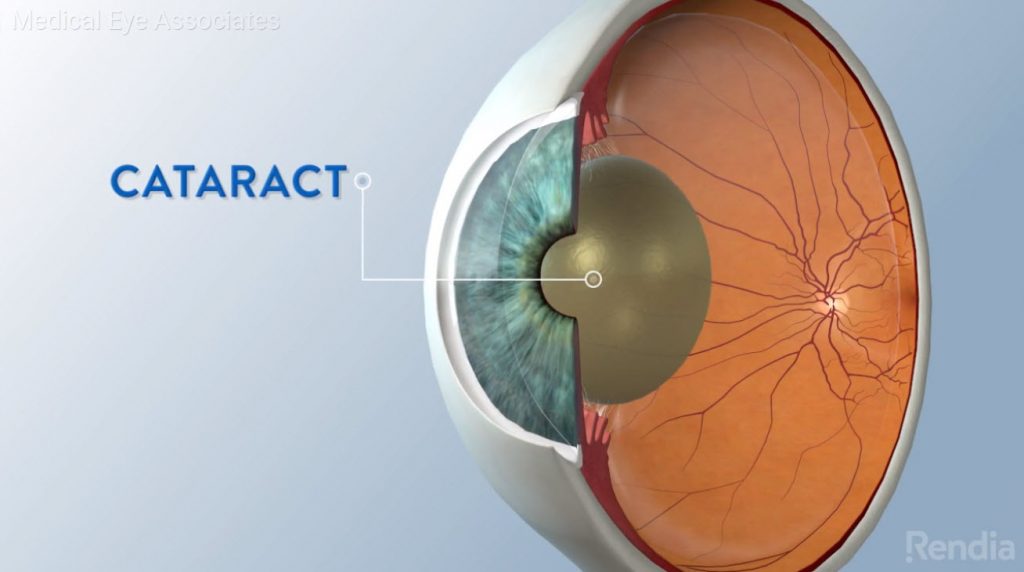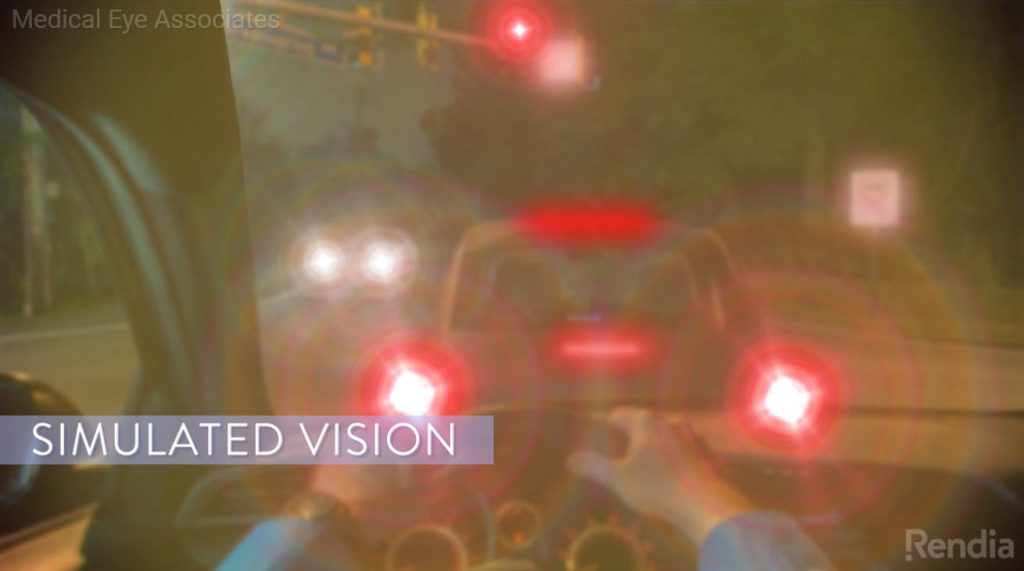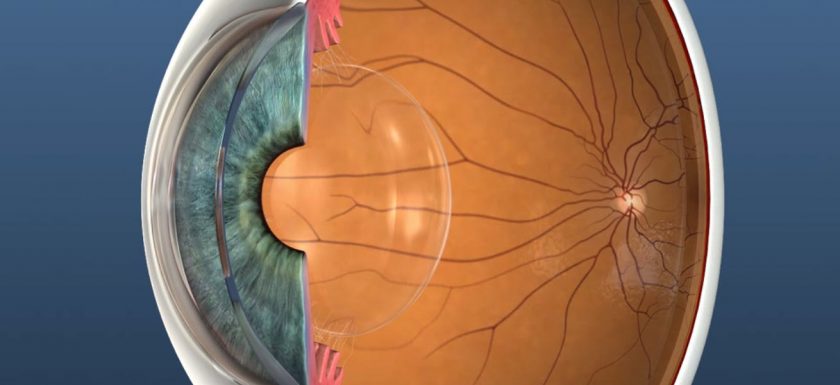By Medical Eye Associates
As you look at the world around you, think of how valuable your vision is. In this article, you will find out everything you need to know about Cataract. Dr. Mont Catrwright is a Cataract specialist and a Cataract Surgeon. He has over 30 years of experience and is considered to be one of the best Cataract Surgeons in Kissimmee and Orlando.
Can you prevent Cataract?
Cataracts are the most common cause of vision loss for people all around the world. While there is no way to prevent Cataracts, you can slow their progression by wearing UV protected sunglasses, eating healthy, quitting smoking, and taking nutritional supplements.
What is Cataract?
While Cataracts are a natural part of the aging process, they do not have to interfere with your lifestyle. A Cataract is a clouding of the crystalline lens inside your eye. For people who have Cataracts, seeing is like looking through a foggy window or a cloudy lens.
The lens in our eye is one of the critical structures for focusing light at the back of your eye, where nerves send signals to your brain, and you see an image. When the lens of your eye is clear and unclouded, it allows light to pass through.

As your lens naturally clouds with age, it blocks some light from coming through, causing the vision to become yellowed and blurry. The blurriness makes it difficult to see, especially at night, as glare around lights is a common symptom of Cataracts. The two images below show simulated vision through a clear lens versus vision through Cataract.
Because a Cataract worsens over time, it can eventually keep you from thoroughly enjoying the activities you love. Like most things related to aging, Cataracts develop more slowly based on genetics and lifestyle choices, such as managing your stress level and making healthy dietary choices. Treating a cataract can open up a whole new world of possibilities when it comes to your vision.


Cataracts affect more than 24.4 million Americans age 40 and older. Approximately half of all Americans have cataracts by the age of 75. That number is projected to grow to 50.2 million by the year 2050, according to NEI.
Thankfully, modern Cataract Surgery is one of the safest and most effective surgical procedures performed today. Cataract Surgery can restore vision lost to Cataracts, and often can reduce your dependence on eyeglasses as well.
Cataract Symptoms and Causes
As the Cataract grows larger and clouds more of your lens, more noticeable symptoms will develop.
Cataracts are not an eye disease you contract. It is a natural result of getting older, similar to wrinkles and gray hair. As we age, cells die and accumulate behind the eye lens, which can cause it to turn yellow and cloudy.
The result is blurred vision and fuzziness. One of the main symptoms people with Cataract can experience is a clouded-like vision, which has been described as looking through a frosty or fogged-up window.
Some of the signs include:
- Clouded or blurred vision
- Difficulty seeing at night
- Sensitivity to light
- Glare
- A feeling of not having enough light for reading and other activities
- Seeing “halos” around lights at night
- Frequent changes in eyeglass or contact lens prescription
- Fading or yellowing of colors
- Double vision in a single eye
When to Have Cataract Surgery
Today, Cataracts can be treated in a variety of ways. Initially, when symptoms begin to appear, you may be able to improve your vision with a new pair of glasses or a change in prescription. Brighter lighting may also help in the short-term. There are two types of Cataract Surgery:
- Phacoemulsification, or phaco (most common procedure)
- Extracapsular surgery (done when the Cataract is too dense and hard)
If a Cataract grows large enough to impair your vision, and affect your daily activities, Cataract removal is recommended. Cataract removal is a standard procedure and is safely performed millions of times each year.
During the surgical procedure, Dr. Cartwright removes the clouded lens that has affected your vision and replaces it with a clear, artificial, intraocular lens (IOL). As a result, most patients can achieve a noticeable improvement in their vision.
Does Cataract Grow Back?
Sometimes, months or even years after cataract and lens replacement surgery, your vision may seem to fade. This is often because of something called posterior capsular clouding. When you had your cataract and lens implant surgery, an Intraocular lens (or IOL) was implanted within the lens capsule.
The lens capsule is a thin, elastic, and transparent envelope inside your eye that once held your natural lens – and now holds the IOL in place. Within a few weeks after lens implant surgery, the capsule shrinks and seals itself to the IOL, which is what holds it firmly in place. As time goes by, the capsule may become cloudy. This often occurs sooner with premium IOLs, but patients with any IOL may develop it as well.
This is not a cataract “coming back” or a “secondary” Cataract, but a very common side-effect following lens replacement. The typical solution is a YAG laser capsulotomy. The YAG laser will make an opening in the center of the posterior capsule about the size of your pupil, creating a clear visual pathway. This procedure is usually not done at the time of lens implant surgery because it could interfere with the implant’s position.
Once the YAG procedure has been performed, you should see a very quick improvement in your overall vision. Fortunately, this is a one-time event and extremely unlikely to ever need to be repeated in the future. Call our office if you have questions about the YAG laser procedure.
What Lens Options Are Available For Someone Having Cataract Surgery
During cataract surgery, Dr. Cartwright uses intraocular lens implants, commonly called IOLs. They may be one of the most important developments in eye care over the last 30 years. These tiny prescription lenses are permanently placed inside the eye to restore focusing power when the eyes natural lens was removed during Cataract Surgery or lens replacement surgery.
Before the development of IOLs, the only way to restore focusing power in an eye after Cataract Surgery was with thick, ‘coke-bottle’ glasses, or contact lenses. Without those glasses or contact lenses, the patient could see only shapes and colors.
If you require Cataract removal surgery, choosing the right lens implant is an important decision for you and your doctor. The lens implant selection is the basis for optimal vision enhancement post-surgery and lifestyle improvement.
As mentioned earlier, In the past, patients had limited lens implant options to meet their visual needs. Today’s lens technologies now offer optimum natural vision with premium lenses. To determine which lens is right for you, consider your lifestyle and ask yourself:
- Do you focus more on near or far objects?
- How important is color and contrast sensitivity to you?
- How often do you drive at night?
It is also important to discuss your goals following the procedure to ensure your expectations are realistic. Keep in mind that your vision will continue to change over time and may require additional care in the future.
What Types of IOLs are Available?
Toric Lens
Special IOLs, called ACRYSOF® IQ TORIC IOL can reduce or eliminate the need for distance vision correction after Cataract Surgery. Unlike conventional IOLs, Toric IOLs are specifically designed to address astigmatism, a condition resulting from an irregularly shaped cornea.
Once the lens is aligned correctly inside of the eye, it offsets the distortion of the cornea, focusing light clearly into the eye. In rare cases, the lens may shift out of alignment. If this occurs, a simple procedure is performed to rotate the lens back into alignment.
Although Toric IOLs can significantly improve vision, they may not eliminate astigmatism, especially in severe cases. Prescription eye-wear or a refractive procedure may be needed to correct any astigmatism that remains.
Aspheric Lens
Aspheric lens implants are now available, which can improve the quality of vision following Cataract or lens replacement surgery. These lens implants are specifically designed to reduce visual disturbances such as glare, which are commonly found with traditional lens implants. Conventional lens implants are spherical, meaning the front surface is uniformly curved. Aspheric lens implants are slightly flattered in the periphery and are designed to provide sharp image quality and improved contrast sensitivity in low light environments.
Patients who wish to have the best quality of distance vision, especially in dim or dusky conditions, may want to consider an Aspheric Lens Implant. Please discuss all options with our surgery consultants prior to your procedure.
Multifocal Lens
New Multifocal IOLs are now available, which can reduce the need for reading glasses after Cataract, or lens replacement surgery. These lenses are designed to address presbyopia, in which people over the age of 40 begin to lose the ability to read or see up close. In the past, when IOL was placed inside the eye during Cataract or lens replacement surgery, it could only focus on a single distance. These IOLs are called Single Focus IOLs, and allow an eye to see either far away, or close-up, but not both.
Now, intraocular lenses called ‘Multifocal IOLs‘ are available. These lenses correct both near and distance vision; so that both near and far objects can be in focus at the same time. Many people get used to multifocal IOLs right away.
Other people feel a little imbalanced at first, but get used to it within a matter of days or weeks. A small percentage of patients with multifocal implants may experience halos or ghost images around lights at night. Most often, these improve over time as your brain adapts, but in rare cases, they can be permanent.
The multifocal implant isn’t right for everyone. The advantage of choosing a multifocal implant is that you may be able to avoid the need for glasses for both distance and near vision after surgery.
How Is Cataract Surgery Performed?
Cataract removal is a standard procedure and is safely performed millions of times each year. During the procedure, Dr. Cartwright removes the clouded lens that has affected your vision and replaces it with a clear, artificial, intraocular lens. As a result, most patients can achieve a noticeable improvement in their vision. Cataract Surgery used to require a relatively large incision in the eye, and the use of sutures to close that incision.
Today, technological advances allow surgeons to work through an incision much smaller than in the past, usually requiring no sutures at all. Small incision Cataract Surgery, is made possible by using high-frequency sound waves known as ultrasound, or phacoemulsification. The sound waves break a Cataract up into tiny fragments that can then be removed through the small incision.
The other advance that makes small incision Cataract Surgery possible is the foldable intraocular lens implant. These implants are made of soft materials, which can be folded like a taco or rolled-up with a special instrument, allowing them to fit through tiny incisions.
Once inside the eye, these lenses unfold and return to their original shape. Small incision Cataract Surgery is less invasive, allows patients to resume normal activities soon after surgery, and provides the fastest recovery of vision.
Life After Cataract Surgery
Fortunately, patients undergoing cataract surgery today have more advanced options than ever before. Your health insurance covers the costs of Cataract Surgery with a conventional lens implant. However, the additional charge for implanting premium artificial lenses to reduce the need to wear eyeglasses is not covered and must be paid out-of-pocket by the patient.
Remember that the benefit of these premium lens implants is to minimize the inconvenience of having to wear eyeglasses as often after surgery. They are not medically necessary because they have nothing to do with improving your eye health.
Following Cataract Surgery, you should not expect to see well immediately. An eye shield should be worn the first few days after the surgery. One of the most common immediate Cataract Surgery side effects is that your eyes are blurry for at least the first several days.
The recovery rate differs between patients and even between both eyes of the same patient. The amount of blurriness during the early few days will not determine or influence the outcome.
It is never harmful to use your operated eye. In most cases, vision typically regains clarity after a few days and then stabilizes over several weeks.
Frequently Asked Questions About Cataract
What causes Cataract?
A Cataract is a part of a natural aging process; however, in some cases, Cataract can develop in childhood. It is yellowing of a natural lens in the eye. Some of the common contributing factors are smoking, UV light, poor diet, and some diseases such as diabetes.
What are some of the most common Cataract Surgery complications?
Complications can occur during any surgical procedure. Thanks to advances in the Cataract Surgery procedure, this surgery is one of the safest methods available. Possible risks and associated eye problems and complications include, but are not limited to the following:
- allergic drug reaction and complications from general anesthesia
- worsening of the condition
- no improvement in vision
Severe hemorrhage, infection, retinal detachment, vitreous loss, loss of eyeball, blindness, swelling of the retina, double vision, eyelid droop, glaucoma, wrong implant power, astigmatism, pain and suffering, tenderness, scar tissue, retained cataract material, optic nerve head atrophy, rupture of membranes, unequal refraction and mechanical damage from the implant. The above list does not reflect all the possible complications.
Patients who have undergone prior refractive surgery such as LASIK, PRK, RK, or CK might experience problems with reference to the need for glasses after surgery. This occurs because of inaccuracy in lens implant choice due to changes in the cornea by the prior refractive surgery. Further surgery may be required to replace the implant with one of the different strengths.
What lens options are available for Cataract Surgery?
There are multiple lens options for cataract removal surgery replacement. There are two main option IOL’s:
- basic lens, which focuses on either near vision or far vision
- multifocal IOL, which can focus on objects near and far
Every candidate should discuss their option with our physicians or surgery counselors while considering their lifestyle.
What is the recovery time after the Cataract Surgery?
The Cataract recovery time is relatively short. Immediately after the surgery, your vision will be blurry, but as your eye heals, your vision improves. Any soreness should disappear within a couple of days.
What is the cost of Cataract Surgery?
Cataract Surgery cost depends on a few factors. Some of the most common are:
- Are you using your insurance to cover the cost of the surgery (like MediCare), or will you be paying for the surgery out of pocket?
- Is your surgeon in your out of your insurance network?
- Will, your surgeon, be implanting basic IOL or a premium lens?
Does MediCare cover Cataract Surgery?
If you are over the age of 65 and have MediCare, the plan covers 80% of the surgery cost. Please make sure you discuss your options with our surgery counselor.
What happens if Cataract is left untreated?
Although Cataract is not life-threatening, it could have debilitating effects on the quality of your life if left untreated. Due to advances in the treatment of Cataract, today, the surgical intraocular lens replacement is one of the safest procedures, with a relatively quick recovery.
Should you wear sunglasses after Cataract Surgery?
Most UV exposure comes from UVA and UVB rays. These types of UV rays are absorbed by several structures in the eye and can contribute to the development of many short-term and long-term eye conditions. No matter how dark, or what color the lenses are, certain types of sunglasses do not completely protect your eyes from UVA and UVB rays.
Wearing sunglasses without the right kind of UV protection can actually do more harm than if you didn’t wear any protection at all. Because sunglasses dilate the eyes, wearing the wrong kind can actually allow more harmful UV rays to enter into the eye.
Most eye care professionals will prescribe 100% UV protection against the sun’s damaging effects. If you choose to purchase over-the-counter sunglasses, make sure that the lenses block at least 60% of UVA and 70% of UVB rays.
Our physicians can provide you with complete UV-protected sunglasses in a variety of options, including Solid Tints Gradient Tints Polarization and Anti-Glare coating. Wearing 100% UV protection on your eyes is the best way to enjoy beautiful, sunny days for years to come.


